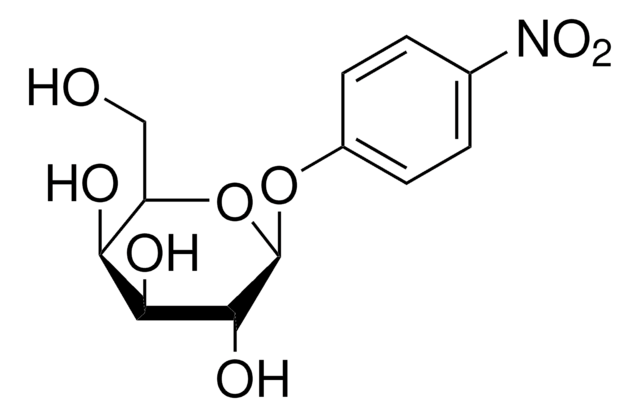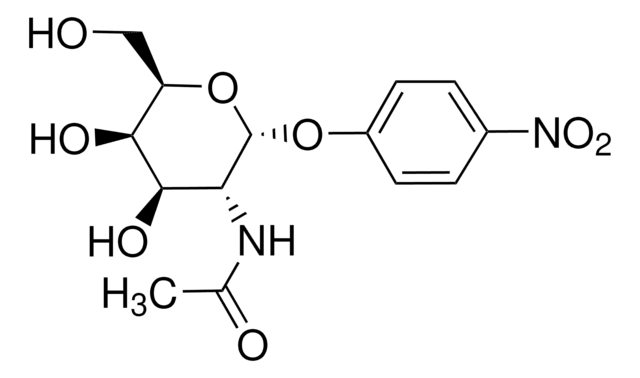N3628
4-Nitrophenyl α-L-fucopyranoside
≥98% (TLC), powder
동의어(들):
4-Nitrophenyl alpha-L-fucopyranoside
크기 선택
₩223,402
출고 가능일2025년 3월 28일세부사항
크기 선택
About This Item
₩223,402
출고 가능일2025년 3월 28일세부사항
추천 제품
제품명
4-Nitrophenyl α-L-fucopyranoside, ≥98% (TLC)
분석
≥98% (TLC)
양식
powder
solubility
acetone: 4 mg/mL, clear, colorless
저장 온도
−20°C
SMILES string
C[C@@H]1O[C@@H](OCc2ccc(cc2)[N+]([O-])=O)[C@@H](O)[C@H](O)[C@@H]1O
InChI
1S/C13H17NO7/c1-7-10(15)11(16)12(17)13(21-7)20-6-8-2-4-9(5-3-8)14(18)19/h2-5,7,10-13,15-17H,6H2,1H3/t7-,10+,11+,12-,13+/m0/s1
InChI key
DCCILTHSDFBSCK-RCGNDRPLSA-N
유사한 제품을 찾으십니까? 방문 제품 비교 안내
애플리케이션
생화학적/생리학적 작용
Storage Class Code
11 - Combustible Solids
WGK
WGK 3
Flash Point (°F)
Not applicable
Flash Point (°C)
Not applicable
개인 보호 장비
Eyeshields, Gloves, type N95 (US)
이미 열람한 고객
활성 필터
자사의 과학자팀은 생명 과학, 재료 과학, 화학 합성, 크로마토그래피, 분석 및 기타 많은 영역을 포함한 모든 과학 분야에 경험이 있습니다..
고객지원팀으로 연락바랍니다.









